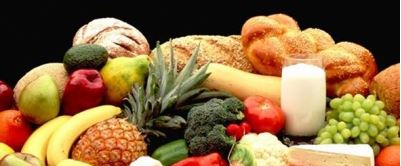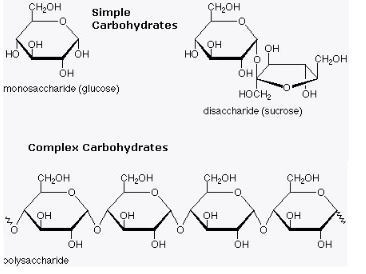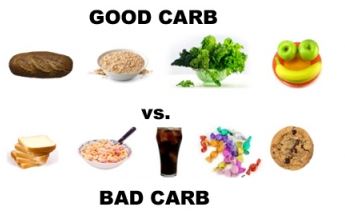Low carb, high carb, carb cycling – what’s the deal? Here’s the science:
Carbohydrates are a primary source of energy for your body. However, there are many different types of carbohydrates that work differently in your body. Recently, carbohydrates have gotten a bad reputation so you hear ‘low carb’ and ‘no carb’ thrown around quite a bit. What are you supposed to avoid? How much can you eat – if you can eat it anyway?

Simple Carbs vs. Complex Carbs
In science, the definition of simple carbs and complex carbs is different from ‘clean eating’ talk. Simple carbohydrates are simply sugars (glucose, fructose, galactose) and the sugars made out of these sugars (sucrose, maltose, lactose). There are simple carbohydrates in your fruit and milk – they are good for your body! Simple carbs are digested faster than complex carbs as they are single or double chained sugars.

Complex carbohydrates consist of polysaccharides (multiple chain sugars) such as starches and fiber, as well as oligosaccharides like beans and take longer to digest. Starches are composed of amylose and amylopectin which is digested differently than simple sugars like glucose and fructose. However, eventually all sugars will be broken down into simple sugars by enzymes to be burned for energy or converted into glycogen or fat.
Converted to fat? We don’t want that…
There are three things that occur when you consume carbohydrates (this is simplified).
- First, your body burns the carbohydrate for energy. For every 1 gram of carbohydrate, you get 9 kilocalories of energy. Many organs in your body depend solely on carbohydrates for energy so it is important to have a proper intake – adjusted per individual.
- Secondly, excess carbohydrate that was not burned for energy is converted to glycogen in your liver and in your muscles.
- Glycogen will store in the liver as a ‘just in case’ stock of energy for your brain if you stop eating carbohydrates. In these cases, your liver will convert the glycogen back into glucose which your brain can then use for energy.
- Glycogen will also store in muscles. This is also for a ‘just in case’ scenario. In full muscle sprint, your muscles burn carbohydrate as they can be burned at a faster rate. Ever done a HIIT without carbohydrates in your system? It’s tough… When muscles operate anaerobically, they rely completely on glucose. If there is no glucose stored, your body will break down protein in your muscles to maintain glucose blood levels. This is why a lot of trainers recommend eating carbohydrates before working out – your muscles only feed on glucose during full sprint to keep them going!
- Lastly, any excess carbohydrate with be converted into fat and store in your fat cells. So yes, carbohydrates can be converted into fat, but only when you consume too many! Otherwise, your body needs carbohydrate!
So what do I eat and how much do I need to eat?
A simple good rule of thumb to follow for ‘good carbs’ and ‘bad carbs’ is as follows:

Good carbs – fruits, vegetables, legumes and whole grains.*
Bad carbs – refined grains, sweets and alcohol (beer).
*Make sure you are buying 100% Whole Grain foods – it will be stated on the label! Some products will contain whole grains, but won’t be 100% whole grain.
The Institute of Medicine recommends that 45-65% of your calorie intake should come from carbohydrates and at least 130 grams a day. However, lowering your carb intake and increasing protein intake can help reduce your total calorie intake for weight loss. Experiment with your carbs and do what feels right for your body! Tired, foggy, lazy? Check your carb intake!










